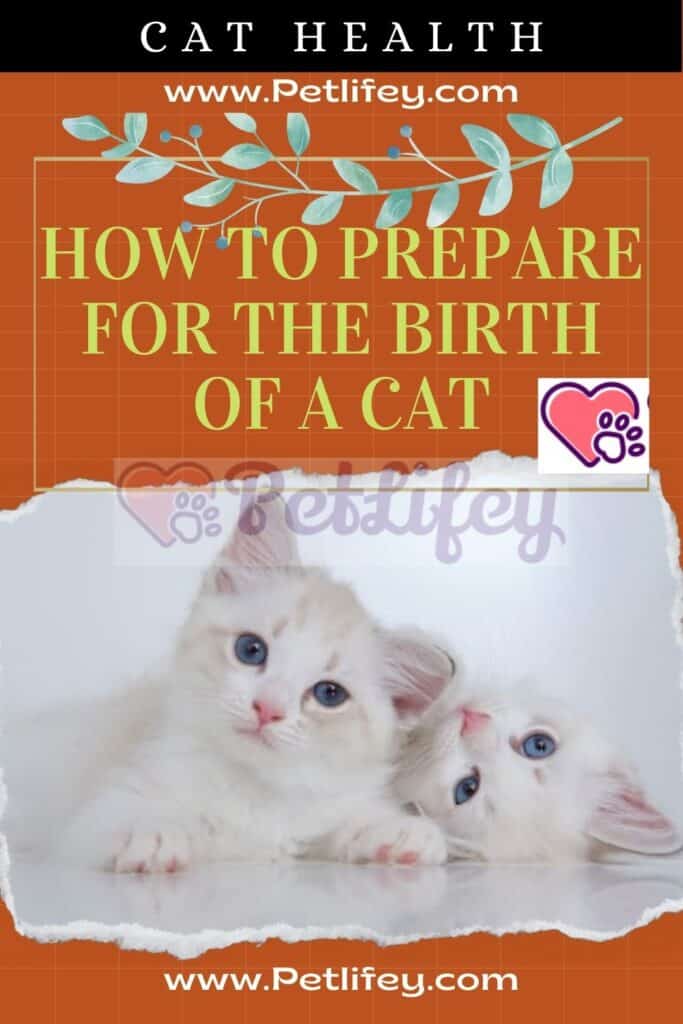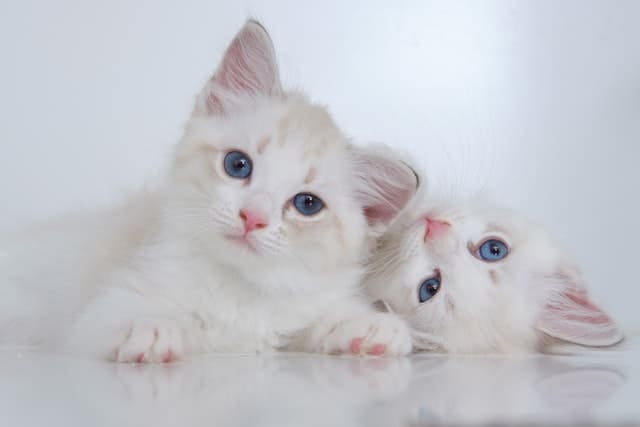
If your feline pet in your house is pregnant, it is important that you know how to prepare for the birth of a cat to ensure that everything goes smoothly. Knowing how to act will help mom and kittens to come. At Petlifey, we explain the necessary preparations.
When is your cat going to give birth?

The young usually give birth about sixty-four days after mating. This gestation period can vary by a few days, but the general rule of thumb is nine weeks.
Make a mark on your calendar and prepare to be home a few days before and after the 64th.
Feeding for the mother cat
About four to five weeks after mating, vitamins A and B and calcium supplements should be added to the cat’s diet. The cat’s diet should consist of the usual quality foods, rich in protein, such as chicken, liver, heart, meat and eggs.
Similarly, ensuring more fluid intake before and after delivery will help the mother to produce milk in sufficient quantities.
Preparation of your cat’s nest
The most used option for the birthing box or nest box for cats is usually cardboard. The nest box must be lined inside with newspaper, which keeps the bottom warm and absorbs moisture.
The papers have to be covered with an old sheet so that the ink does not impregnate the coat of the animals. The cat could be poisoned by washing herself or licking kittens and ingesting newspaper ink.
It is advisable to blankets because the kittens have small nails and sharpened as pins that could easily become entangled with the fabric of wool or acrylic. On the other hand old sheets are soft and squishy.
Color is not important, although some people think that white sheets, while allowing a good view of the kittens against a white background, reflect too much light.
However, if the nest box has been placed where there is no direct sunlight or strong lamp light, there is no reason to worry about reflections from the white sheets.
The nest box should be long enough for the cat to stretch out comfortably and high enough so that kittens cannot easily get out of it.
Nest box location
A few weeks before birth, the female must be accustomed to her nest. This implies two advantages:
- The chances that she has the kittens in an inconvenient place (for you) are minimized.
- As the female will be used to the nest box from before, at the time of delivery she will feel more comfortable in the place chosen by you.
If you don’t provide a nesting box for the female, it shouldn’t surprise you if she holds her kittens in a closet, under the sofa, on her bed, or even in a corner of the kitchen. For some people this would be no problem, but others would find it unacceptable.
If you decide that your cat should have her kittens in a place of your choice (and not hers), remember that newborns are very adversely affected by direct sunlight that would hurt their eyes, and by drafts. air and humidity that would cause colds and serious respiratory infections.
For this reason, it is generally not advisable to let the cat give birth in a basement or basement .
Certainly some breeders have their cat flats in the underground, but only after those rooms have been properly prepared so that they are comfortable throughout the year, protected against humidity, and so on.
Dormers are often too hot, and you would not be comfortable constantly walking up and down stairs to keep an eye on kittens. Garages shouldn’t even be considered suitable places for a new family of cats.
A kitten is very weak, like a human baby, and childhood is the most dangerous time in a cat’s life because during it the little animal is exposed to diseases that are fatal to a cat.
Perhaps the most suitable place for the cats’ nest is one of the cat’s favourite places, a place where she likes to lie down to take naps. It is probably a place somewhat away from the busiest centers of the house, quiet and without direct sunlight.
Naturally, some cats prefer the top of a refrigerator or a bookcase shelf, and these are obviously not a good choice for nest box placement.
They even prefer elevated resting places from which they can observe everything that happens at their feet. They usually have a secluded corner in which they occasionally settle; this would be the ideal nest location. Remember to keep the room at a suitable temperature, avoiding drafts while the kittens are young.
Cut breast hair
To help kittens suckle, it is advisable to cut the hair around the cat’s nipples, but if she is not used to having her hair, nails and the like cut off, do not try.
The cat could move abruptly, and if you have sharp scissors in your hands they could injure the mother or one of the kittens. Sharp scissors should never be used on an animal.
Most animals are easily startled and sudden movements can cause accidents. It is safer to use blunt, rounded-tipped scissors.
Environment for the pregnant cat
This is a very important point. A cat has to be in a family environment and with known people that she trusts when she gives birth to her kittens.
Separating her at this crucial moment from her home and family would cause her unnecessary stress. A commercial cat flap or vet’s office may have excellent facilities, but they cannot provide the new mother with the affection that she is used to receiving at home.






